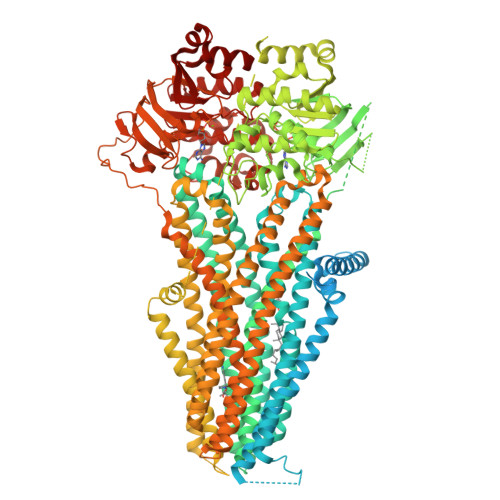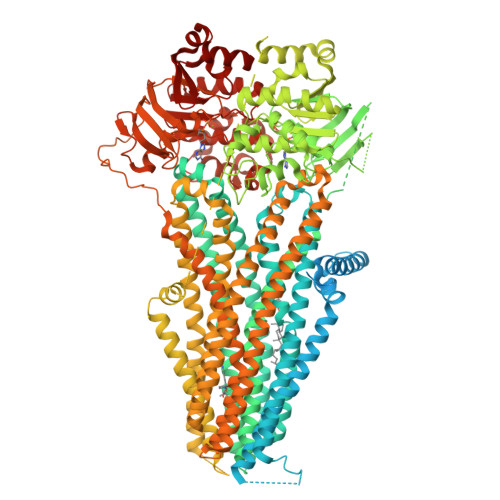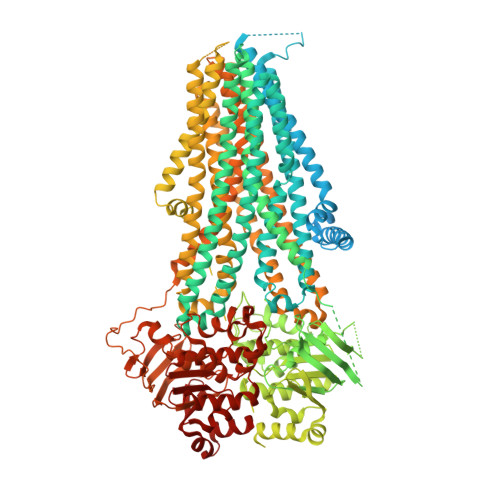Structural identification of vasodilator binding sites on the SUR2 subunit.
Ding, D., Wu, J.X., Duan, X., Ma, S., Lai, L., Chen, L.(2022) Nat Commun 13: 2675-2675
- PubMed: 35562524
- DOI: https://doi.org/10.1038/s41467-022-30428-y
- Primary Citation of Related Structures:
7VLR, 7VLS, 7VLT, 7VLU - PubMed Abstract:
ATP-sensitive potassium channels (K ATP ), composed of Kir6 and SUR subunits, convert the metabolic status of the cell into electrical signals. Pharmacological activation of SUR2- containing K ATP channels by class of small molecule drugs known as K ATP openers leads to hyperpolarization of excitable cells and to vasodilation. Thus, K ATP openers could be used to treat cardiovascular diseases. However, where these vasodilators bind to K ATP and how they activate the channel remains elusive. Here, we present cryo-EM structures of SUR2A and SUR2B subunits in complex with Mg-nucleotides and P1075 or levcromakalim, two chemically distinct K ATP openers that are specific to SUR2. Both P1075 and levcromakalim bind to a common site in the transmembrane domain (TMD) of the SUR2 subunit, which is between TMD1 and TMD2 and is embraced by TM10, TM11, TM12, TM14, and TM17. These K ATP openers synergize with Mg-nucleotides to stabilize SUR2 in the NBD-dimerized occluded state to activate the channel.
Organizational Affiliation:
State Key Laboratory of Membrane Biology, College of Future Technology, Institute of Molecular Medicine, Peking University, Beijing Key Laboratory of Cardiometabolic Molecular Medicine, 100871, Beijing, China.























